Lessico
Pietro Martire d’Anghiera
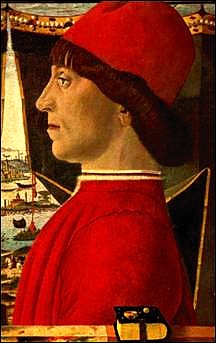
Storico e
geografo italiano (Arona 1457 - Granada 1526). Discendente da una famiglia
originaria d'Anghiera (l'attuale Angera in provincia di Varese), intorno al
1478 si recò a Roma raccomandato da Ascanio Sforza (1455-1505 - cardinale nel
1484), e divenne segretario del
Governatore. Seppur sconsigliato da Pomponio Leto![]() e
dal cardinale Giovanni Arcimboldi (Parma ca. 1430 - Roma 1488), che tenevano in
gran conto il suo ingegno, entrò al servizio del conte di Tendilla, che seguì
in Spagna e nelle imprese d'arme a favore della cristianità riferite in
lettere storicamente preziose.
e
dal cardinale Giovanni Arcimboldi (Parma ca. 1430 - Roma 1488), che tenevano in
gran conto il suo ingegno, entrò al servizio del conte di Tendilla, che seguì
in Spagna e nelle imprese d'arme a favore della cristianità riferite in
lettere storicamente preziose.
Vestito l'abito ecclesiastico (trasformando il proprio nome in quello di Pedro Mártir de Anglería) divenne cappellano della regina Isabella che lo mandò in Egitto da dove tornò con la Legatio Babylonica (1511), la relazione sulla sua missione. Venendo spesso a contatto con alcuni navigatori (Vasco da Gama, Magellano), amico personale di Colombo, Vespucci e Cortés, poté raccogliere molti elementi da inserire con attendibilità nelle Decades de Orbe novo, che coprono un arco di 34 anni di storia delle scoperte americane e che gli procurarono la benemerenza di storiografo ufficiale.
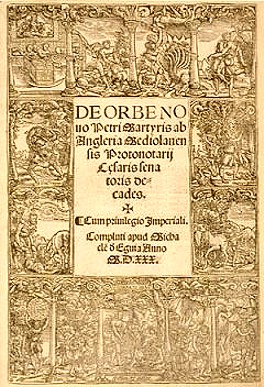
da
Libro primo della historia de l'Indie
Occidentali
di Pietro Martire d'Anghiera
edito a Venezia nel 1534
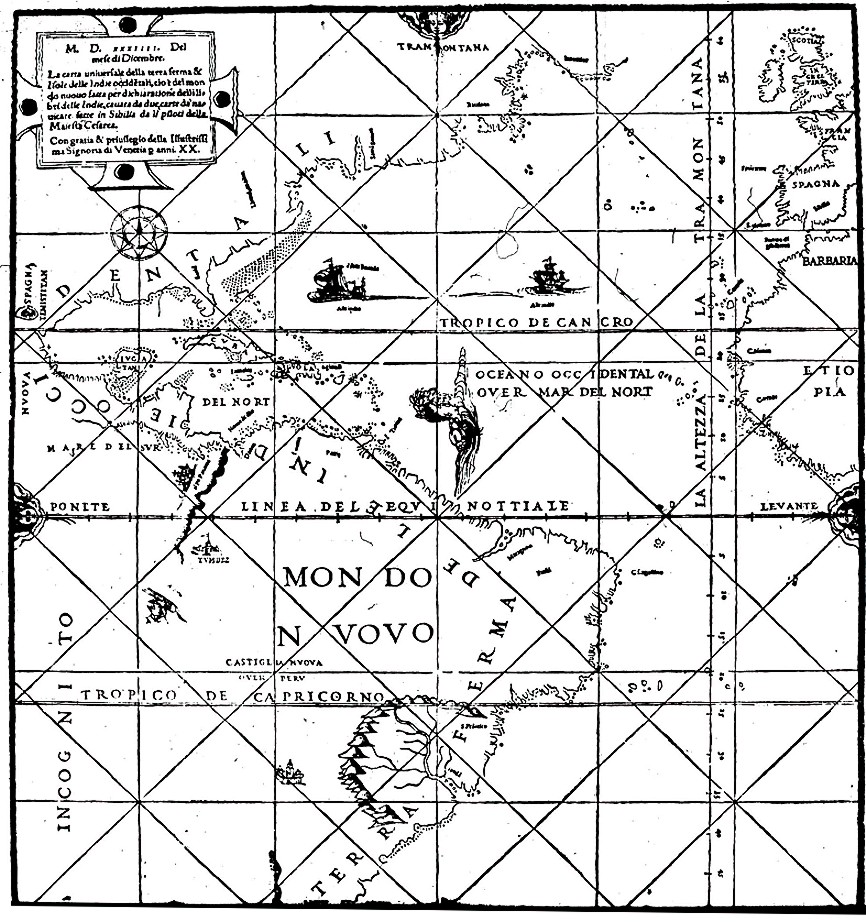
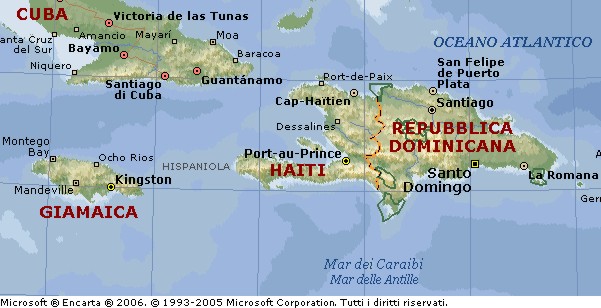
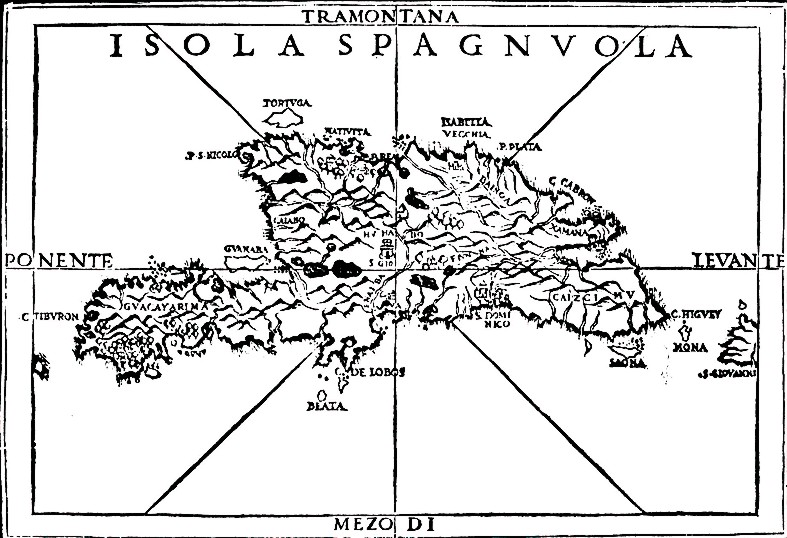
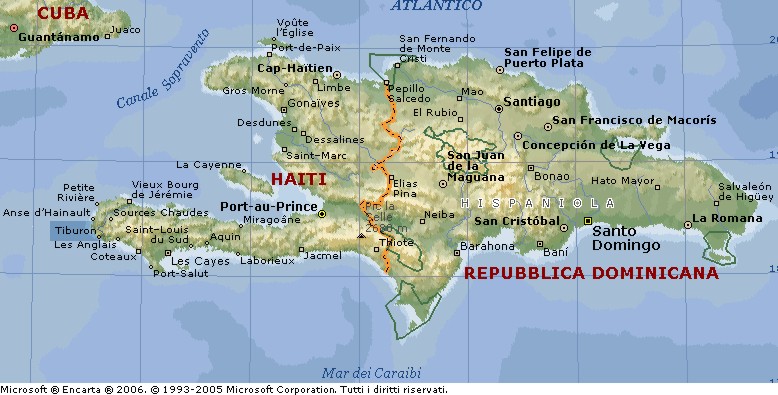
Peter
Martyr d'Anghiera
Catholic Encyclopedia
Historian of Spain and of the discoveries of her representatives, b. at Arona, near Anghiera, on Lake Maggiore in Italy, 2 February, 1457; d. at Granada in October, 1526.
He went to Rome at the age of twenty, and there made the acquaintance of Pomponius Laetus, the antiquarian. Cardinals Giovanni Arcimboldi and Ascanio Sforza became his patrons, and under Pope Innocent VIII he was made secretary of the prothonotary, Francesco Negro. He became acquainted through the Spanish prothonotary Geraldino, with the Ambassador Don Inigo Lopez de Mendoza, Count of Tendilla, whom he accompanied to Saragossa in August, 1487.
He soon became a notable figure among the Humanists of Spain, and in 1488 gave lectures in Salamanca on the invitation of the university. The new learning was under high patronage. King Ferdinand was a pupil of Vidal de Noya; Queen Isabel had studied under Beatrice Galindo, surnamed The Latina; Erasmus has praised the learning of Catherine of Aragon, who married Henry VIII of England and Luis Vines relates that the daughter of Isabel the Catholic, Dona Juana La Loca, could converse in Latin with the ambassadors from the Low Countries. Italians were spreading the Renaissance movement throughout Spain, and the intelligence of Castile sat at the feet of Peter Martyr d'Anghiera.
His chief task, however, after 1492 was the education of young nobles at the Spanish court and a great number of noted men issued from school. In 1501 he was sent to Egypt on a diplomatic mission to dissuade the Sultan from taking vengeance on the Christians in Egypt and Palestine for the defeat of the Moors in Spain.
Following on the successful issue of the mission, he received the title of "maestro de los caballeros". ln 1504 he became papal prothonotary and prior of Granada. In 1511 he was given the post of chronicler in the newly formed State Council of India, which was commissioned by the Government to describe what was transpiring in the New World. In 1522 his old friend, Adrian of Louvain, now Pope Adrian VI, appointed him archpriest of Ocana.
Charles V gave him in 1523 the title of Count Palatine, and in 1524 called him once more into the Indian State Council. At last he was invested by Clement VII, on the proposal of Charles V, with the dignity of Abbot of Jamaica. Martyr never visited the island, but as abbot he had built the first stone church.
As chronicler he performed notable literary work which as preserved his name to posterity. The year of his appointment (1511), he published, with other works, the first historical account of the great Spanish discoveries under the title of "Opera, Legatio, Babylonica, Oceanidecas, Paemata, Epigrammata" (Seville, 1511). The "Decas" consisted of ten reports, of which two, in the form of letters describing the voyages of Columbus, had been already sent by Martyr to Cardinal Ascanius Sforza in 1493 and 1494.
In 1501 Martyr, at the urgent request of the Cardinal of Aragon, had added to these eight chapters on the the voyage of Columbus and the exploits of Nino and Pinzon, and in 1511 he added a supplement giving account of events from 1501 to 1511. Jointly with this "Decade", he published a narrative of his experiences in Egypt with a description of the inhabitants, their country, and history. By 1516 he had finished two other "Decades", the first of these being devoted to the exploits of Ojeda, Nicuesa, and Balboa, the other giving an account of the discovery of the Pacific Ocean by Balboa, of the fourth voyage of Columbus, and furthermore of the expeditions of Pedrarias.
All three appeared together at Alcala in 1516 under the title: "De orbe novo decades cum Legatione Babylonica". The "Enchiridion de nuper sub D. Carolo repertis insulis" (Basle, 1521) came out as the fourth "Decade" treating of the voyages of Hernandez de Córdoba, Drijalva, and Cortes. The fifth "Decade" (1523) dealt with the conquest of Mexico and the circumnavigation of the world by Magellan; the sixth "Decade" (1524) gave an account of the discoveries of Davila on the west coast of America; in the seventh "Decade" (1525) there are collected together descriptions of the customs of the natives in South Carolina, as well as Florida, Haiti, Cuba, Darien; the eighth "Decade" (1525) gives for the most part the story of the march of Cortes against Olit.
Martyr got many of his accounts from the discoverers themselves; he profited by letters of Columbus and was able also to make use of the reports of the Indian State Council. He himself had a great grasp of geographical problems: it was he, for example, who first realized the significance of the Gulf Stream.
For these reasons his "Decades", which are also written with spirited vivacity, are of great value in the history of geography and discovery. All the eight "Decades" were published together for the first time at Alcala in 1530.
Later editions of single or of all the "Decades" appeared at Basle (1533), Cologne (1574), Paris, (1587), and Madrid (1892). A German translation came out at Basle in 1582; an English version may be found in Arber, "The first three English books on America" (Birmingham, 1885); a French one by Gaffarel in "Recueil de voyages et de documents pour servir à l'histoire de la Geographie" (Paris, 1907).
In addition to his "Decades" in another valuable source of historical information is his "Opus epistolarum", although its value is somewhat lessened by the fact that it was not arranged or published until after his death. This collection consists of 812 letters to or from ecclesiastical dignitaries, generals, and statesmen of Spain and Italy, dealing with contemporary events, and especially with the history of Spain between 1487 and 1525. It appeared first at Alcala in 1530; a new edition was issued by Elzevir at Amsterdam in 1670.